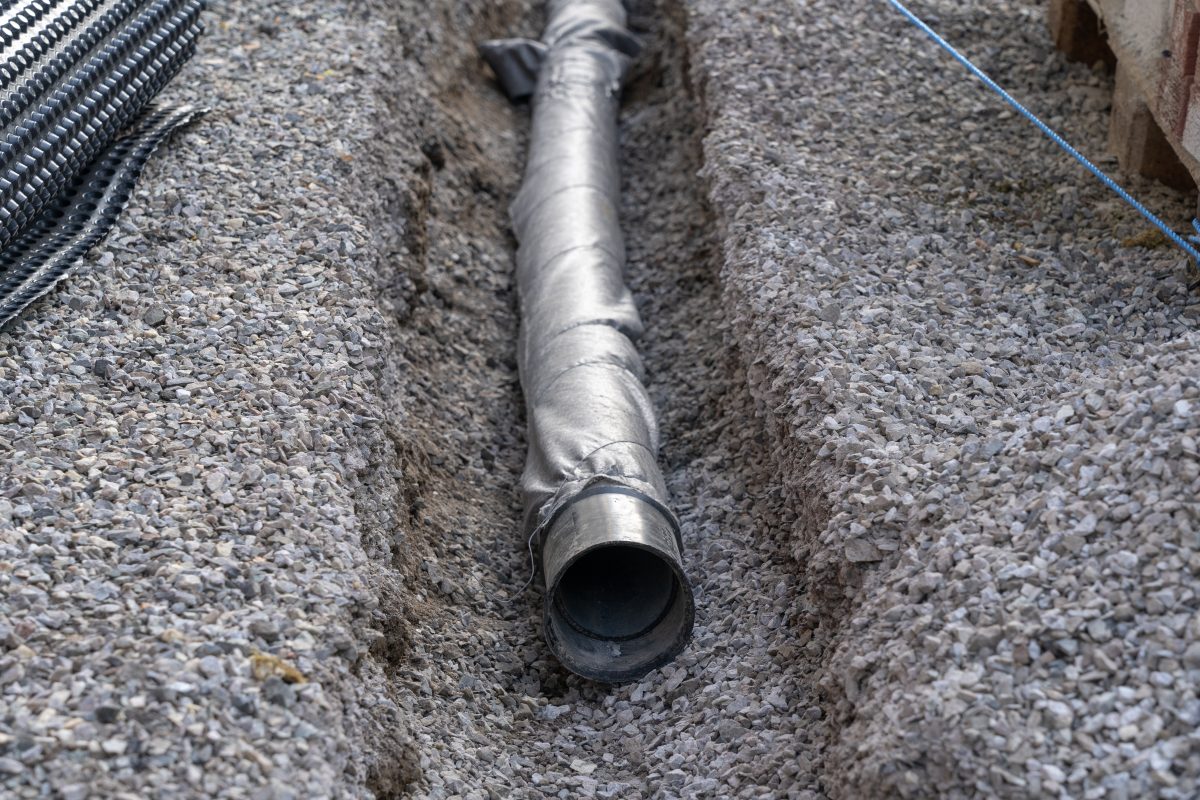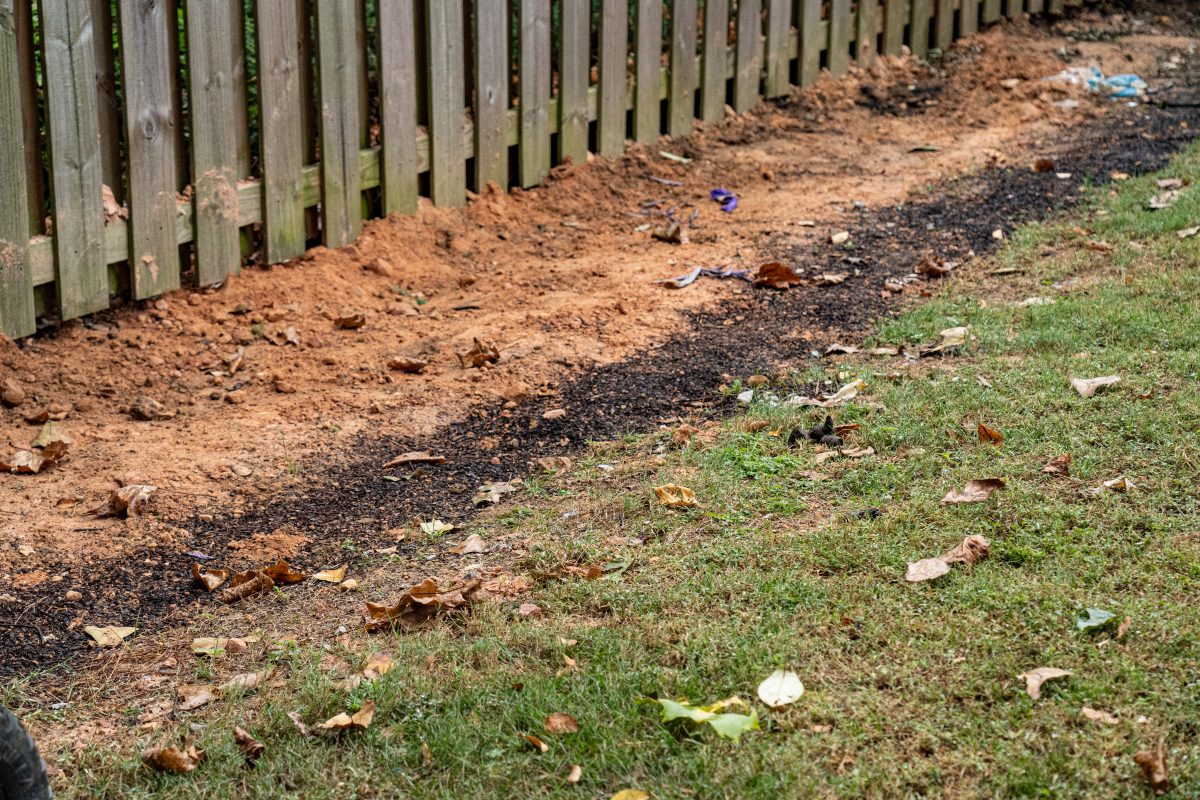
Understanding the Concept of a French Drain
I’ve often been asked, “What exactly is a French drain?” To put it simply, a French drain is an efficient system designed to redirect water away from areas where it’s not wanted.
The concept isn’t as complicated as you might think. A trench filled with gravel or rock containing a perforated pipe directs water away from your property. This design cleverly uses gravity to its advantage since the trench slopes down towards the area where you want the water redirected.
It’s interesting to note that despite its name, this drainage system didn’t originate in France at all! It was named after Henry Flagg French who introduced this concept in his book about farm drainage back in 1859.
Here are some key components of a typical French drain:
- Trench: This is dug on a slight slope for effective water redirection.
- Perforated Pipe: Situated at the bottom of the trench, this allows collected water to be channeled away.
- Gravel or Rock: Fills up most of the trench and acts as an easy path for any excess groundwater.
Now let’s delve into why someone would need one? The main reason folks opt for installing these systems usually boils down to having issues with excess surface or ground waters making their landscapes soggy and difficult to use – not ideal if you’re planning that perfect garden party!
Another scenario could be if your house sits lower than your surrounding landscape and there’s always pooling around your foundation after heavy rains – definitely something we’d want avoiding since consistent moisture can lead serious structural damage over time.
So now we know what they’re good for but how do we install them? While installation specifics may vary depending on individual circumstances like soil type and local climate conditions, I’ll provide general steps involved:
- Identify Water Problem: Determine where excess moisture tends accumulate on your property.
- Plan Drainage Path: Choose least disruptive route which should terminate well away from house structure (preferably natural low point).
- Dig Trench: Ensure enough depth while maintaining steady slope along entire length so gravity can work efficiently!
- Lay Perforated Pipe & Fill Gravel/Rock: Begin filling starting coarse aggregate followed by laying pipe ensuring holes face downward then fill remaining space larger stone before topping off smaller grade material forming smooth transition surrounding lawn area.
There’s no denying that when properly installed these drains can prove invaluable tools managing those pesky yard puddles while helping protect integrity our homes long-term – truly living up their namesake’s innovative spirit!

The Key Components and Installation Process of a French Drain
When it comes to managing excess water, one solution I’ve often turned to is the French drain. A well-installed French drain can effectively divert water away from your home’s foundation or other areas prone to saturation. But what exactly goes into installing one? Let’s delve into the key components and installation process.
A French drain is essentially a gravel-filled trench that includes a perforated pipe, designed to whisk away water from where you don’t want it. Its main components are:
- Trench: This must be dug deep enough so that it extends past the level of your home’s foundation.
- Gravel: Gravel fills up most of the trench acting as an initial filter for any debris while allowing easy passage for water.
- Perforated Pipe: The pipe sits on top of this layer; its holes let in collected water which then gets carried away.
Now onto my favorite part – installation! Here’s how I typically go about it:
- First off, identify where you’ll need drainage most urgently – usually spots with persistent wetness or next to structures susceptible to flooding damage.
- Next step is digging out the trench, aiming for at least 2 feet deep and 1 foot wide; remember we’re dealing with gravity-based drainage here!
- Laying down landscape fabric in your newly-dug trench helps prevent silt from clogging up our system later on.
- It’s time now for some heavy lifting: fill up roughly two-thirds of your trench with gravel before laying down your perforated pipe.
5.* Finally*, after placing our trusty perforated pipe atop its gravel bed (holes side down!), cover everything over again with more gravel until just below ground level – ensuring effective filtration & flow!
So there you have it! My tried-and-tested method towards installing an efficient French Drain system sure does demand some elbow grease but believe me when I say—it’s worth every drop!
Conclusion: Weighing the Pros and Cons of French Drains
So, after a deep dive into the world of French drains, it’s time to weigh their pros and cons.
On one hand, they’re incredibly effective at diverting water away from your property. This can save you a lot in potential repair costs down the line. Plus, if you’re looking for an eco-friendly solution that won’t harm your garden or local wildlife with chemicals or other pollutants often found in industrial drainage solutions – well then, this is it!
But let’s not ignore their downsides either.
- First off – installation isn’t exactly a cakewalk. It requires digging up your yard which can be labor-intensive.
- Secondly – while they are great at handling moderate rainfall effectively, heavy rains might overwhelm them.
- Lastly – they require regular maintenance like clearing out leaves and debris to ensure proper function.
And here comes my favorite part – numbers! Let’s break down some average costs associated with installing a French drain:
| Cost Component | Average Cost (CDN) |
|---|---|
| Labor | $50-$100 per hour |
| Materials (per linear foot) | |
| – Perforated Pipe | $0.50-$3 |
| – Pea Gravel | $10-$20 |
| Installation | |
| – Exterior French Drain | $10-$50 |
| – Basement French Drain | $40-$100 |
It’s clear that there’s no one-size-fits-all answer when deciding whether or not to install a French drain on your property. Your decision should depend on factors like how prone your area is to flooding or excessive rainfall; what kind of soil surrounds your home; as well as cost considerations.
All said and done though? I’d say these underground heroes certainly have more going for them than against them! As always however – do make sure you consult with professionals before making any big decisions about changes to home infrastructure!
Troy Channer is a seasoned professional with over a decade of experience in the construction industry, specializing in residential projects and road infrastructure networks. His expertise spans a broad range of skills, including proficiency in Microsoft Excel, Word, and PowerPoint, which he adeptly uses to streamline operations and enhance productivity.
Troy’s commitment to excellent customer service is a cornerstone of his professional philosophy, always prioritizing client satisfaction and fostering strong relationships. His leadership skills are well-recognized, and he has a proven track record of managing teams to deliver high-quality results.
In addition to his construction experience, Troy is also the proud owner of a successful landscape company based in Oakville. This venture allows him to apply his extensive knowledge of civil engineering and project management to create beautiful and sustainable outdoor spaces for his clients.
Troy holds an Advanced Diploma in Civil Engineering Technology from Humber College, further solidifying his credentials as a highly skilled operations professional in the industry. His combined experience and education make him a versatile professional capable of tackling a wide range of projects.








